|
By Duke Autret, Myotherapist In this article we will discuss Shoulder Impingement and Rotator cuff strains together since although there are distinctions they also have some overlap. In terms of the anatomy of the shoulder the rotator cuff consists of a group of 4 deep shoulder muscles which run from the shoulder blade, across the ball and socket joint of the shoulder (Glenohumeral Joint) and attach into the ball part of the upper arm bone (Humerus). This group, collectively known as the rotator cuff is indeed a ‘cuff’ that sits around the shoulder joint and which supports the muscle actions of rotating the ball in the socket at this joint, however, in reality the rotator cuff’s function is more involved with the stabilisation of the Glenohumeral joint rather than its rotation. Another muscle that we will look at here is the Biceps of your upper arm. A well known muscle for sure, its function is to show off how strong you are… and more specifically, to bend your elbow. They are actually two muscles hence ‘bi-ceps’ ('bi' indicating 'two', and 'ceps' indicating 'heads') and it’s generally the inside bicep (biceps long head) muscle which can be implicated when it comes to shoulder impingement syndromes. Image sourced from https://www.orthobethesda.com/blog/rotator-cuff-disorders-the-facts/
So what are the overlaps and distinctions of these two conditions? Generally speaking, the rotator cuff strain refers to some tearing (or micro-tearing) of the muscle/s or tendon/s and graded 1-3 depending on the severity, and is mostly the result of an trauma incident (an injury sustained while using the arm or preventing a fall etc). And since we are discussing the rotator cuff it would want to be further determined which of the 4 muscles or combination thereof is/are involved. Now ‘Shoulder Impingement’ on the other hand, can also be graded similarly however tends more to be the tendons of either the Biceps long head muscle and/or one of the rotator cuff muscles that are implicated via impingement (being pinched) between the bones of the ball of the upper arm and the shoulder blade when lifting or using the arm above shoulder or head height, and usually is a gradual onset that has to do with a change in the biomechanics (movement patterns) of the affected shoulder. When dealing with rotator cuff strains in the acute phase we will advise you on the care options and may work on the adjacent regions compensating for the injury as well and light treatment to the area itself to support its healing. Our plan in early stage care is to reduce pain and restore mobility, while also supporting the stability of the joint while the stabilising muscles are recovering. This can mean our treatment at this stage includes things like gentle manual therapy to reduce pain and inflammation, gentle mobilisation and passive movements, and taping for stability and to let those injured muscles have a chance to recover. In the later stages we apply more direct work on the specific rotator cuff muscles to ensure the minimisation of any scarring in the muscle tissues and promote the fullest possible recovery. This is where we start to see the sensitivity of your shoulder has already dropped, and we can start to provide some strengthening protocols for you to rebuild the conditioning of your shoulder. Of course, this is always going to be dependent on your unique situation, and we'll find appropriate treatment options for each stage of your recovery. Theres no one size fits all with this. The treatment plan will also vary depending if your injury is within the muscle fibres or if there is more tendon involvement, whether that be Rotator cuff tendons or Biceps. We will provide you with additional support for integrating movements and exercises to rehab them back to their functional strength. Tendons can take some time to completely recover, and need to be gradually loaded and strengthened. Personally I find working with shoulder injuries satisfying as they are one of the more complex joints in the human body with lots of movement possible but where so many different things can go awry, and I enjoy seeing them regain all that movement potential. If this has left you wondering about either of these conditions applying to you and you're looking for some help please feel free to come see me at Simple Wellness Myotherapy in Rowville. I'm available on Wednesdays, Fridays and Sundays - you can find a time with me online or just give us a call on 03 8204 0970 and we can find you a time that suits and book you in over the phone. Improving circulation is an important factor in helping sore, tight, and tired muscles recover faster. This is because good blood flow is essential for delivering oxygen, nutrients, and hormones to the muscles and removing waste products. When circulation is poor, it can cause muscle tension, fatigue, and pain, leading to slower recovery and reduced performance. Think of circulation and blood flow as the way that your muscles breathe. Circulation is also essential for activating the immune system, which helps repair damaged tissues and reduce inflammation. When the immune system is working efficiently, it can more easily break down lactic acid and other waste products that build up in the muscles during exercise, reducing muscle soreness and stiffness.
There are a number of ways to improve circulation and support muscle recovery. One of the most effective is to engage in regular exercise, such as cardio or strength training, which can help increase blood flow and improve overall cardiovascular health. Stretching and foam rolling can also help improve circulation by loosening tight muscles and promoting blood flow. As Myotherapists and Remedial Massage Therapists, we have a wide range of circulation boosting tools at our disposal.
Heat therapy, such as using a hot bath or heating pad, can also be beneficial for improving circulation and reducing muscle pain. Heat increases blood flow to the affected area, which can help relieve tightness and reduce inflammation. Finally, proper nutrition is important for supporting circulation and muscle recovery. Eating a healthy, balanced diet rich in nutrients like vitamins C and E, magnesium, and omega-3 fatty acids can help improve circulation, reduce inflammation, and support overall health. Our therapists are not able to give customised nutritional advice, but we always suggest maintaining good hydration, eating a diet full of colourful fruits and veggies, and ensuring you get enough protein - whether thats animal or plant based, we're not here to judge! In conclusion, improving circulation is a crucial aspect of supporting muscle recovery and reducing muscle pain and fatigue. Incorporating activities like exercise, stretching, massage, heat therapy, and proper nutrition into your routine can help improve circulation and speed up the healing process. Want help from our therapists? Book a time to have a treatment with us. As we get into the swing of the new year, many people will make a resolution to get fit. But if you go about this the wrong way, it can end in an injury that puts you on the sidelines for weeks or even months.
Exercise is amazing for your body and your mind. It boosts mental wellbeing, helps you to manage pain and over the long-term can protect you against injury. So how can you get back into a fitness regime without hurting yourself? Here are our top tips to minimise your chance of injury. Start small – even if you used to be a master! We know from experience that it’s really tempting to go back to doing what you have done in the past. After all, running that fast, lifting those weights or doing Pilates 5 days a week used to be easy! But whether you’ve been away from exercise because of injury, pregnancy or just that life got on top of you, this is the most common mistake people make. Over time, your muscles will become less conditioned. If you go back to your old regime, it may be too stressful on your body and lead to an injury. So don’t just jump in where you were. Instead, go back to the start. Your body will start to remember if you give it time to warm back up to exercise. Increase your frequency and intensity with time This goes hand in hand with the first point. It takes time for the body to get back into the swing of things. So give yourself at least a couple of months to get back to where you were before you stopped. For example, let’s say you used to run 10km 5 times per week. You’ve just had a break for several months due to a new job that took up your time. To get back into it, you might want to pace yourself by doing: 2km gentle jog x 2 for the first week to assess your fitness 5km gentle jog x 2 for 2 weeks 5km run x 3 for 2 weeks 7.5km run x 3 for 2 weeks 7.5km run x 4 for 2 weeks 10km run x 3 for 2 weeks If you’re feeling good and have had no injuries or flare-ups, then progress back to your 5 x 10km runs. As you can see, this progression takes 10-12 weeks to get back to your original program. It may take longer if you’ve been off exercise for a longer period of time or had a significant injury. But it will pay off in the long run if you pace yourself! Make sure you’re getting good nutrition and plenty of sleep Exercise recovery starts from the moment you stop exercising. There are a lot of factors that contribute to recovery, but nutrition and sleep are two of the most important. Our bodies use nutrients to heal and grow muscles, and most of this healing takes place as we sleep. For nutrition, our nutritionist buddy Samantha Gemmell recommends eating plenty of wholefoods for a good mix of protein, vitamins, minerals and antioxidants that support recovery. When it comes to sleep, Sam says that quality is just as important as quantity. Make sure that your room is completely dark, avoid caffeine after 3pm and minimise your screen time for 30 minutes before bedtime. Do some gentle stretches after your workout Exercise is great for your body, but it can lead to muscle tension. Muscle tension can put you at risk of injury. So how do you minimise that risk? One way is to stretch out after a workout. This doesn’t have to be anything too extensive. If you’ve gone for a run, do some gentle stretching of your legs and hips. If it’s upper body day at the gym, stretch out your shoulders and upper back. 1-2 minutes of stretching after each workout can add up! Give your body some TLC Sometimes stretching isn’t enough, and your muscles need a little extra TLC. Many people will get a relaxation massage or remedial massage, but this only addresses one aspect of the muscle tension. That’s where myotherapy comes in. Myotherapy incorporates massage with other techniques such as dry cupping, needling, trigger point therapy and taping. This combination can be helpful for not only treating exercise-related injury but also preventing it. Your myotherapist can also assess your muscles and joints to see if any are at significant risk of injury and prescribe exercises to strengthen those areas. Want to show your body that TLC and reduce your risk of injury? Book in with one of our friendly myotherapists here. Have you ever wondered about flame cupping? Flame cupping sounds scarier than what it really is. Let’s have a look at the facts around flame cupping, and how it might be beneficial for you.
What is flame cupping? Flame cupping is a form of dry cupping that uses fire to cause a vacuum in a cup. The cup is then placed on the area of skin being treated. What is flame cupping good for? Flame cupping is great for relieving muscle tension, especially tension that isn’t responding quickly to hands-on techniques. The best part about flame cupping? It is applied and left on while your practitioner continues to work on another area of the body. So if you have a sore shoulder and tight lower back, they can cup the shoulder and massage the lower back or vice versa. Is flame cupping going to burn me? It shouldn’t if it’s applied by a qualified flame cupping therapist. A qualified therapist who has training in flame cups knows how long to heat each cup before applying it to the skin. If you’re worried, ask your practitioner about their training in flame cups before agreeing to treatment. Who can’t have flame cupping? As useful as flame cupping is, there are a few contraindications to keep in mind. Flame cupping is not recommended for those with diabetes, heart disease, high blood pressure or those using medications such as warfarin. Flame cupping cannot be safely applied over wounds. However, it can be used over fully healed scar tissue. Does flame cupping detoxify the body? Not really. Flame cups can’t detoxify you – that’s the job of your liver and other detox organs. But in a way, they can support the natural detoxification process. It increases blood flow to the area, which improves the exchange of oxygen and waste products in that area. The waste products are then transported to the liver and detox organs and excreted from the body. I have dark marks after flame cupping – is this a bad thing? Cupping marks are normal after a treatment. They aren’t bruises or a sign of tissue damage. Eastern medicine practitioners such as acupuncturists believe that cupping marks are a sign of what is happening in the body. For example, darker marks are signs of how stagnant the energy or ‘chi’ is. For myotherapists, they are bruise-like marks caused by surface capillaries that break during the suction. Either way, they are nothing to worry about – they will fade over the period of 3-7 days for most people. If your cupping marks remain dark or tender for a prolonged period, contact your therapist directly for a check-in. How can I try out flame cupping? By booking an appointment with our flame cupping myotherapist Emily! Emily loves to work with flame cupping, because she can work on two areas of tension at once. To book a session with Emily, head to our booking page and select ‘Emily Wells’ for your practitioner. Do you love your heat pack? Me too!
There are plenty of reasons to keep your heat pack close by, and not just because we're entering winter! Heat treatment is great for muscle pain - its cheap, effective, and drug-free! Have you ever wondered why heating your sore muscles helps them so much? Some pains are categorised as ischaemic pain - that means that the tissue has a reduction of oxygen supply which is needed for normal cell activity. This tends to happen if we're in positions that compress or over stretch areas for a long time - like sitting at a desk for a few hours without getting up to move around. Heating an area increases the local blood flow, which means the blood vessels widen to get more fresh, oxygenated blood into your muscles and joints. What kind of pain should you use heat for? Many kinds of non-inflammatory pains will respond really nicely to heat, including things like cramping and spasming, stiffness and persistent tight or pulling muscles. Heat packs are easy to use for neck, shoulder, lower back or hip pain. If you have a lot of painful areas, a warm bath can be another great way of getting heat into your muscles - why not add some Epsom salts for the added magnesium benefits for sore, tight muscles! When should you not use heat? Avoid heating up any fresh injuries, especially if you have open wounds or if the injury has become infected. These kinds of injuries will be in the inflammatory stage of healing - you'll be able to tell because the area may be swollen, red and hot, and most likely it'll be much more sensitive than usual! Of course, you do need to be careful with heat packs or hot water bottles to make sure you don't burn yourself. Always wrap your heat pack or hot water bottle in a something like a pillow case, thin blanket or a towel so you don't have the hot surface directly on your skin. Using heat for too long might give you heat rash, so I usually suggest about 20 minutes at a time. Heat on its own is more for symptom relief than for resolving the underlying issue. If you have an injury or feel that you have a lot of long term tension built up in the muscles, book a treatment with your local Myotherapist. Remedial massage and myotherapy treatments are fantastic for releasing muscle tension and loosening up the tight spots. But unless you’re in the clinic a few times a week, there’s a good chance you’re still dealing with tight muscles in your daily life. There are heaps of contributing factors to tight muscles. How you move, how you sleep and how you spend your time can all affect your muscles. But one thing that you might not immediately think of is your diet. There are specific nutrients that your muscles need to contract (tighten) during movement and then relax during stretching or when you’re at rest. One well-known mineral is magnesium – also known as the relaxation mineral. So I asked my nutritionist bestie Sam Gemmell, aka The Rebel Nutritionist, for her top tips around using magnesium to keep your muscles in peak condition. My favourite fun fact from Sam is that dark chocolate is a great source of magnesium, and officially Nutritionist Approved! (Of course, in moderation!) Why do we need more magnesium?
Simply put, because we aren’t getting enough. Most people don’t consume enough through the diet. Magnesium is generally found in wholefoods, which we’re eating less of thanks to the increase in processed foods. But even for those who do eat enough, other factors such as chronic stress can deplete magnesium levels. If you have any kind of gut symptoms such as bloating, constipation or diarrhoea, you might not be able to absorb a good amount of magnesium from the foods you eat. There is also the issue of food containing less magnesium than previous years because the soils are being depleted of this vital nutrient. Magnesium is often called the relaxation mineral, but that’s too simple a term. It is used in over 300 different processes in the body. Healthy magnesium levels support energy production, muscle relaxation, blood sugar regulation, optimal blood pressure, bone strength and production of brain chemicals – just to name a few functions! Magnesium-rich foods to include The most sustainable way to boost your magnesium levels is to eat it! But the good news is that there are plenty of foods that contain magnesium. Some of the best options include:
As you can see, there is a variety of different options that cater to almost any dietary requirements. For best results, I’d recommend including at least one serve of magnesium-rich foods with every meal. This might mean: Oats, quinoa flakes or nut butter on wholemeal toast for breakfast Bean salad, fish and quinoa or sushi with wholegrain rice for lunch Adding a serve of green leafy vegetables to dinner (eg in your bolognaise sauce or soup) Other methods of boosting magnesium Sometimes, boosting your magnesium-rich foods is all you need to get results. But if you have very low magnesium levels, or have any kind of stress or condition depleting your levels, you might need to use food combined with other strategies. Supplements An easy way to get more magnesium in is with a supplement. That being said, please don’t just pick up a magnesium bottle from the supermarket! Magnesium supplements can vary from high-quality to very poor quality (which will give you nothing but diarrhoea!) The forms of magnesium found in most over-the-counter products can be irritating to the gut lining. These are best avoided for anyone with impaired digestion, absorption or any current gut symptoms. Your best bet is to see a practitioner who can recommend a high-quality practitioner brand. This also means you have some guidance around which supplement best suits your needs, as well as how much to take. You could even book a consultation with Sam at The Rebel Nutritionist, she would love to help you! Transdermal magnesium If you have issues with taking magnesium supplements or have very low levels, transdermal magnesium might be an alternative to try. The magnesium is absorbed through the skin. The exact amount of magnesium that makes it into your system isn’t well-researched, but some is better than none! You can use transdermal magnesium by using:
Muscles feeling tight? Been a while since your last myotherapy session? Click here to book a session. Nobody likes to feel sore and achey all the time. If you experience chronic pain, it can contribute to many other conditions and sabotage your mental health. But if you’re looking for natural ways to relieve pain, the first place to look to is your diet. My good friend and incredible Nutritionist, Sam Gemmell, has taken the time to write this guest blog to explain more. Oily fish
Fatty fish are a potent source of omega-3 fatty acids, which are naturally anti-inflammatory. Most studies that have been published focus on omega-3 supplements. But there are small studies that support consuming it as part of the diet as well. One showed that consuming fatty fish 4 times per week can reduce inflammatory compounds in the body. 3-4 serves of oily fish per week is a good number to aim for. If you prefer plant-based sources, include walnuts, chia seeds, flaxseeds and hemp seeds daily to reap the benefits. Olive oil Looking for a healthy source of fat to include in your diet? High quality olive oil has properties that may help to reduce joint-related symptoms. One animal study showed that extra-virgin olive oil reduced joint swelling, slowed the destruction of cartilage and reduced inflammation. But don’t worry – the benefits are for people as well! One study showed that people who consume olive oil are less likely to have rheumatoid arthritis. Olive oil can be drizzled over salads, or used to sauté ingredients. But it's not great for deep frying - deep frying isn't good for you anyway! Berries Berries are the best fruit ever, at least in my opinion! They are chock-full of nutrients including vitamins, minerals and antioxidants that can help to reduce inflammation naturally. One study showed that people who ate at least two servings of strawberries per week were 14% less likely to have elevated inflammatory markers. Researchers also suggest that blueberries and strawberries may offer protection against arthritis. Want to up your berry intake? Chuck them in your smoothies, porridge, salads or just straight into your mouth. Spices Spice things up in the kitchen! Pretty much any herb or spice will have antioxidant and anti-inflammatory properties. But if we’re going to play favourites, turmeric and ginger are bestfor sore joints and arthritis. There are many research studies that show supplementing with turmeric can be beneficial for arthritis. But adding it into your diet can still help as well! Turmeric is not well absorbed, so the best consume it is with a source of good fats and some black pepper. Research into turmeric and ginger has shown that both have anti-arthritic effects. How to use them? It’s simple – sprinkle your favourites spices everywhere! Turmeric and ginger can be added to sweet and savoury dishes. Tart cherry juice Tart cherries are packed full of antioxidants that can support your joint health. One study looking at osteoarthritis showed that consuming 475ml of tart cherry juice daily significantly reduced symptoms and inflammation. Tart cherry juice can also reduce inflammatory markers. But the benefits don't stop there. Tart cherry juice is also a natural source of melatonin, which is needed for deep, restful sleep. If you’re not getting quality sleep, your body can’t repair damage effectively, which can exacerbate pain. Ready to get into tart cherry juice? Make sure you choose an unsweetened variety. Otherwise, a lot of the benefits will be cancelled out by excess sugar. Green tea Don’t get me wrong, I love my coffee. But green tea is king when it comes to caffeine-containing beverages if you’re in pain. Green tea contains a potent antioxidant known as ECGC. ECGC has been shown to reduce inflammatory cytokines in research. And although trials are in the early stages, the research also suggests that it could be beneficial in reducing inflammation in osteoarthritis. I often recommend that coffee drinkers alternate between coffee and green tea – so if you drink 4 cups of coffee per day, try 2 cups of coffee and 2 cups of green tea. But if you're not big on caffeine, even one cup a day can offer health benefits. About Sam Sam is a nutritionist, health writer and wellness speaker based in Melbourne. She loves to spread knowledge about food as medicine, and is passionate about personalised nutrition. You can find out more on her website. The human body is an incredibly complex machine! There are connections that go from one end of the body to the other, and even some that we don’t completely understand yet. But when it comes to your own body, it’s easy to think that it’s simple. Pain happens, and we assume that the pain is from there.
But in reality, pain and dysfunction is far more complicated than that. So today, I thought I’d explore the holistic approach to caring for your body, and why it’s important to understand that your body parts aren’t separate. Pain isn’t always accurate When we’re in pain, we know that something is wrong. But unfortunately, the body isn’t always able to tell us exactly what that something wrong is! This is why pain can be a very confusing condition. For example, you might think that your back pain originates from your back. You go and see a remedial massage therapist who focuses on relieving tension in the back area. But the pain returns. The thing is, your back might not be the actually problem. The pain might be caused by a previous injury causing your pelvis to misalign, which then strains the muscles in the back. Or it might be the shoes that you wear to work, altering your posture. Only by taking a holistic view are we able to find and manage this kind of issue. The benefits of a holistic approach There are so many reasons why it’s smarter to look at the bigger picture of your health and wellbeing. That’s why I recommend that my clients work with a team for optimal results. Benefits of this holistic approach include:
As you can see, you benefit a lot more from caring for your entire body, rather than just treating a specific pain spot! What to tell your myotherapist To take a holistic view of your body and how it functions, I need to be able to take a detailed case history. It’s essential that you tell your myotherapist about any significant injuries, no matter how unrelated you might think it is. Some of my clients have found out that minor injuries have played a major role in their pain! Things to inform me about include:
Do you want to see what a holistic approach can do for your body? Pop over to the booking page and get yourself an appointment today. One thing many clients ask me is ‘is myotherapy painful?’ Some people haven't experienced therapeutic massage techniques, and others have seen remedial massage therapists and experienced pain during or after treatment. This is something that I’m very passionate about. So I thought I would share my opinion about whether myotherapy should be painful, and who it suits.
The difference between myotherapy and other massage styles There are many different types of massage and bodywork. Most people are familiar with Swedish massage and remedial massage. But myotherapy is quite different from these common forms of massage. Generally speaking, Swedish massage is known as the ‘soft’, relaxing form of massage. The focus is overall relaxation of the body. A Swedish massage follows the same routine for every person, moving in gentle, rhythmic ways that help calm and relax the person in a way that feels wonderful. Remedial massage is sometimes known as ‘deep tissue’ work. A remedial massage can be great for relieving widespread tension and pain throughout the body, and for maintaining good muscle health. A remedial massage is hands on, working the muscles in the region that the person is experiencing pain. Many people might think that in comparison to these two, myotherapy has to be painful, deep work. I recently overheard someone tell a friend "oh, you don't want myotherapy, its like a really really deep remedial massage, it hurts like hell!" However, myotherapy can be gentle – it doesn’t have to hurt to be effective! Swedish and remedial massages tend to cover a broad area, while myotherapy focuses on the specific and tailored management of pain and dysfunction to support people during rehabilitation from pain or injury. So if you experience specific pains or a specific condition that affects the muscles and joints, myotherapy might be the best option to support you. The greatest advantage of myotherapy is that it can be adapted to anyone’s needs. If you have chronic pain and are very sensitive to touch, we can relieve tension using gentle techniques that won't set off alarm bells in your nervous system. But if you enjoy a good trigger-point release, we can accommodate that as well! Every persons treatment plan will look different, depending on what your body needs most. What happens during myotherapy You might think that myotherapy is just another type of massage. But in fact, myotherapy is a lot more holistic in the approach to caring for your muscles and joints. Massage is only one aspect of myotherapy, and within it, there are several types that can be used. Myotherapy includes use of extra skills including:
So in fact, myotherapy involves developing a full personalised treatment program that is specified to the condition you have and how your body is best supported. It’s not just about relieving the pain – it’s about rehabilitating the body so that you can heal whatever is causing the pain. The right myotherapist makes all the difference At Simple Wellness Myotherapy, I enjoy helping people who experience chronic pain to manage their condition. So I know how important it is to help relieve the pain they experience without inflicting more pain during or after treatment. There is a very strong policy against ‘no pain, no gain’ in my clinic room! If you want to experience how gentle and supportive myotherapy can be for your body, make sure you book an appointment today. You’re ready to get yourself a myotherapy treatment and get your body feeling fabulous again. But what should you expect after your session, and how should you manage it? Let’s have a look at how to make the most of your session after it’s over.
What to expect after a myotherapy session Every body is different, and can react in different ways. I can treat two clients with the same techniques, and their experience afterwards will be completely different! Of course we all want to feel instantly better after a treatment, but thats not always the case. Particularly for long term issues like injuries, pain, tension and postural problems, it can take a little bit of time to get to that stage where you're feeling better. I don't want you to feel worried if you feel a bit off afterwards, especially if its been a long time since you last had any treatment - keep in mind, we've just worked on some unhappy muscle groups, and altered the incoming messages that your nervous system is getting from those problem areas. It can take a little while to settle. Some of the common symptoms that might arise within 24hrs of a myotherapy session include:
These symptoms will generally only last for a day or two. If they persist, you are welcome to give me a call and we can see whether you need further assessment. How to optimise recovery after a session Whether you experience symptoms or not, your body is recovering and recalibrating after a treatment. Although I may give you advice in your session that is specific to your treatment, here are a few general tips to get you started:
If you stick to these tips, you’re more likely to have a speedy recovery and be at your best. A nutritionist’s advice for post-treatment care A big part of recovering well from a treatment is what you put into your body. So I asked my good friend and nutritionist, Sam, to give us a few tips:
Now that you know how to manage after a session, it’s time to book yourself in for a session! Head here to snag yourself an appointment. |
Meet Our Team
We have a team of great practitioners available 7 days a week at our Rowville clinic. Archives
July 2024
Categories
All
|
Got a question about Myotherapy?
Contact Mel by phone, email or Facebook
|
Simple Wellness Myotherapy & Remedial Massage Clinic
Shop 12B 150 Kelletts Rd Rowville VIC 3178 |
Phone us on
03 8204 0970 |

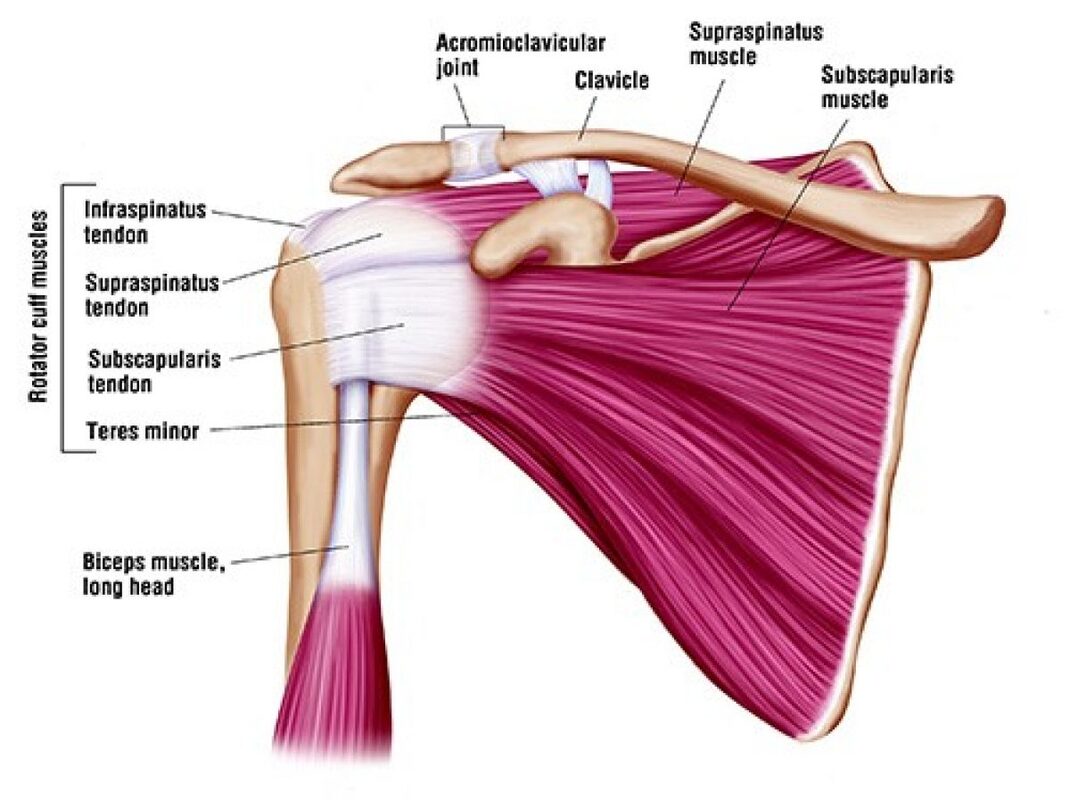
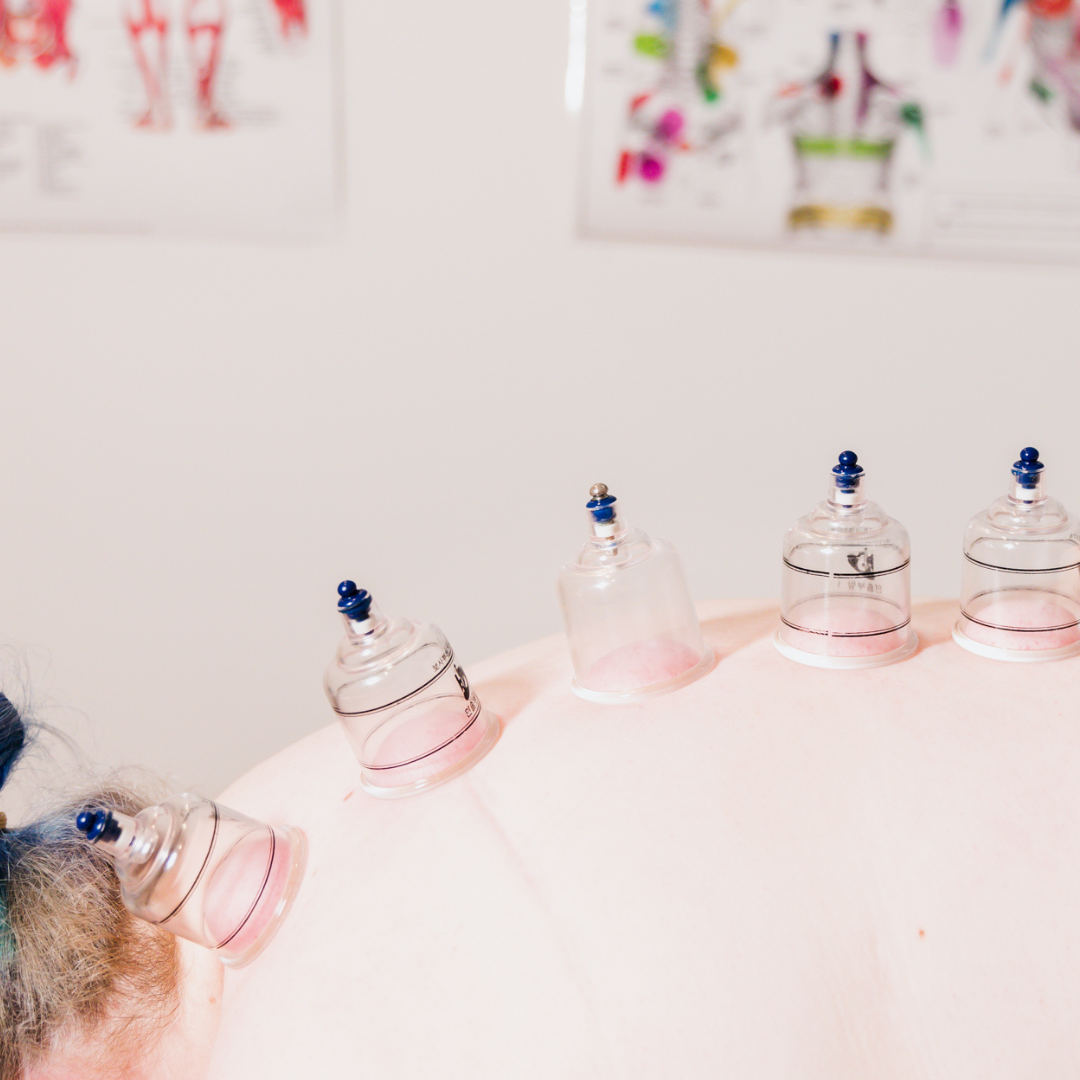
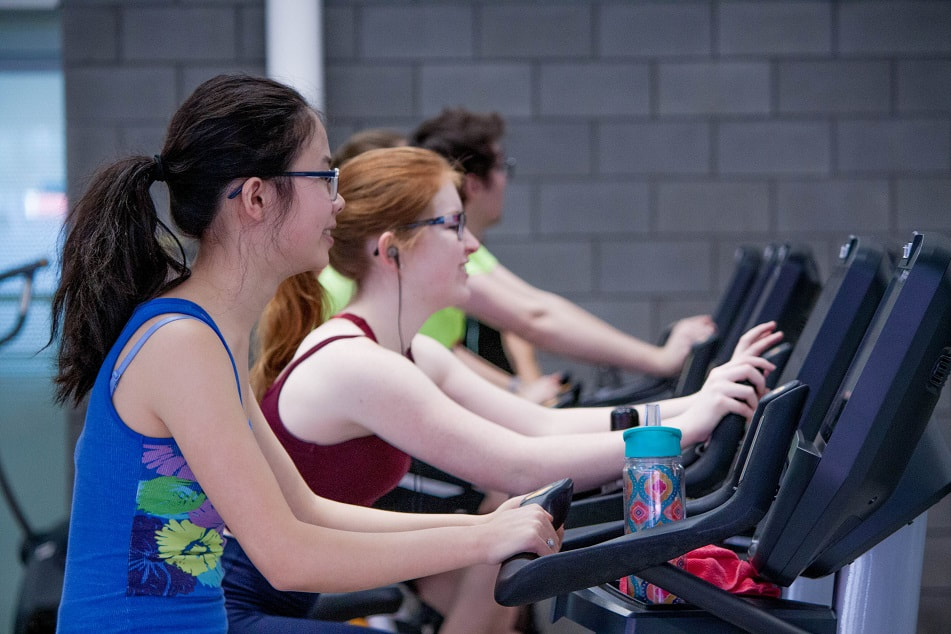
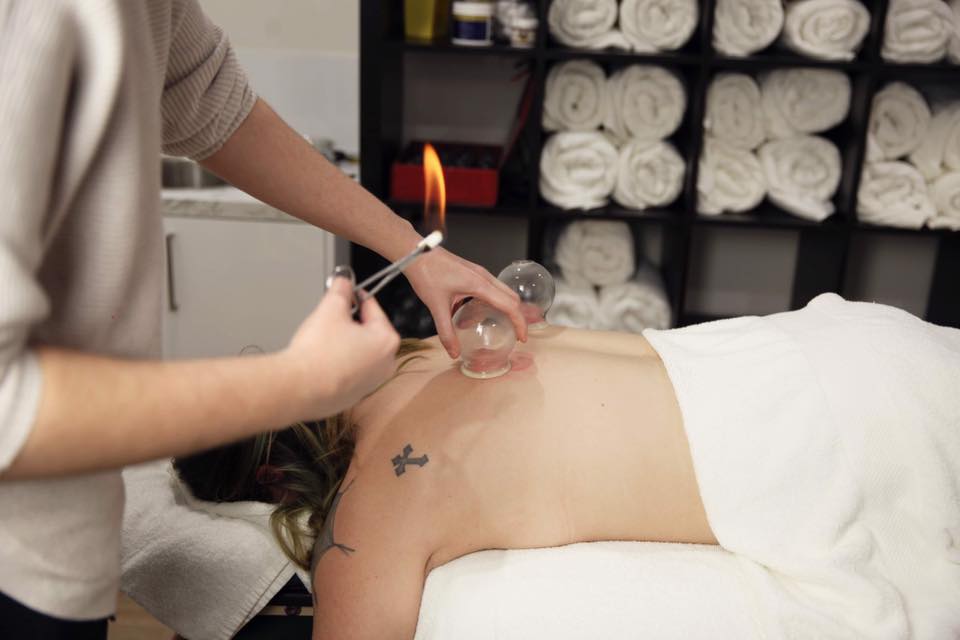
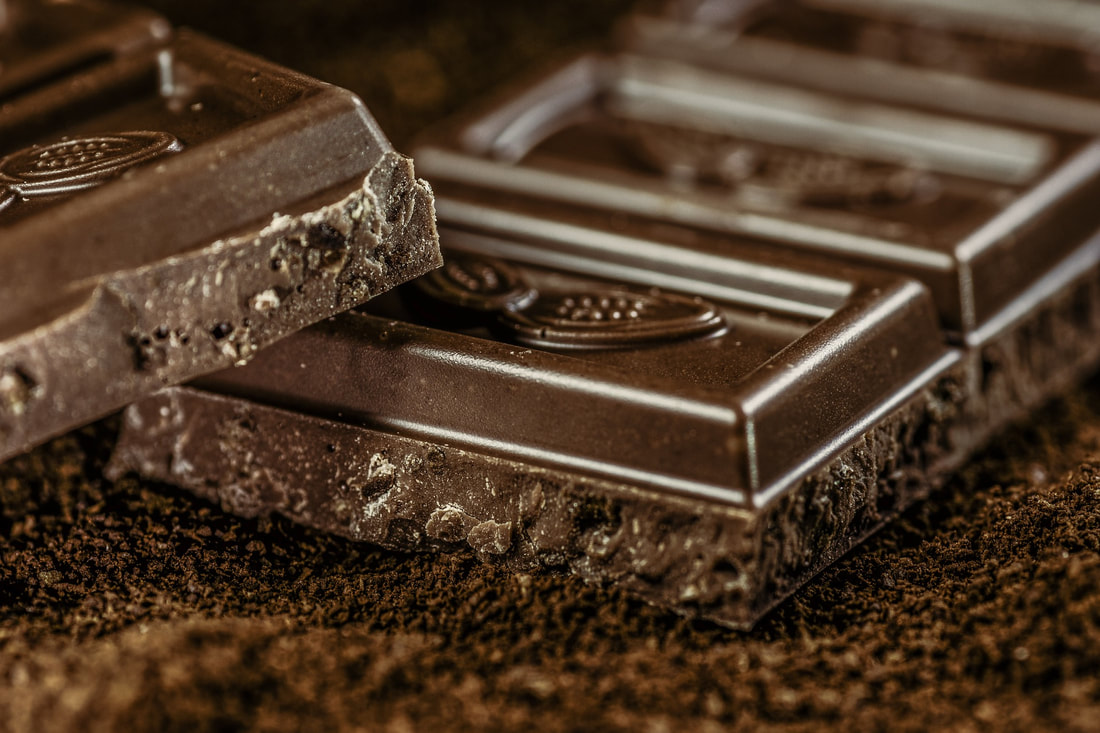
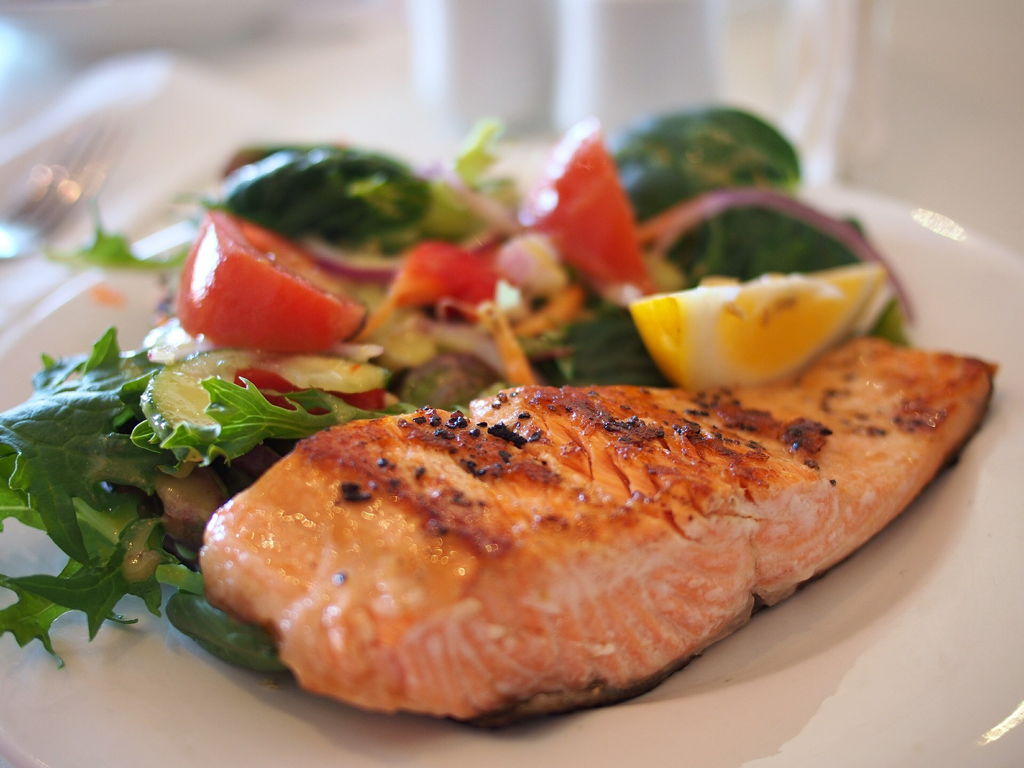

 RSS Feed
RSS Feed